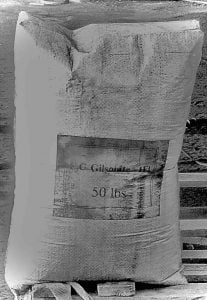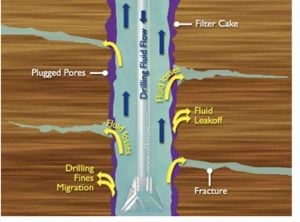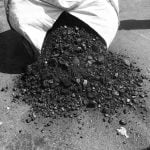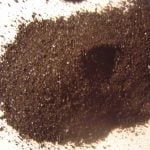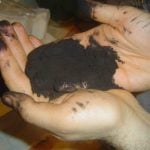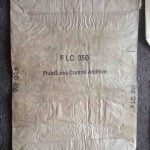
Fluid loss control additives
- Home
- Fluid loss control additives

What is fluid loss control?
Fluid loss control refers to the techniques and methods used to prevent or minimize the loss of fluid from a system, such as a wellbore or a drilling mud system. In the oil and gas industry, fluid loss control is crucial for maintaining well stability and preventing formation damage.
Techniques to use to control fluid loss
- Use of additives: Various additives such as polymers, Gilsonite, fibers, and natural asphalt particles can be added to the drilling mud to reduce fluid loss.
- Mud weight control: The mud weight can be adjusted to reduce the differential pressure between the wellbore and the formation, which can help reduce fluid loss.
- Formation damage prevention: Techniques such as wellbore stabilization, drilling with non-damaging fluids, and avoiding high-pressure differentials can help prevent damage to the formation and reduce fluid loss.
- Proper drilling practices: Proper drilling practices such as maintaining a constant circulation rate and avoiding excessive rotation or vibration can also help control fluid loss.
FLC (fluid loss control) by Gilsonite benefit in drilling
Gilsonite can reduce the amount of torque required to drill through challenging formations, which can result in less wear and tear on drilling equipment. It can also improve the rate of penetration, allowing drilling operations to be completed more quickly.
In addition, FLC drilling can help reduce the amount of waste generated during the drilling process. The use of FLC can help prevent the formation of cuttings, which are small pieces of rock that are generated during drilling. This can help reduce the environmental impact of drilling operations.
Table of Contents
ToggleGilsonite is high temperature high pressure filtrated loss additive
To use Gilsonite as a fluid loss control additive, it is typically added to the drilling mud at concentrations between 2-10% by weight. The exact concentration depends on factors such as wellbore temperature, pressure, and the type of drilling fluid being used.
Gilsonite is a cost-effective and environmentally friendly solution for controlling fluid loss in drilling fluids, and it is widely used in the industry for this purpose.
It is a hard and brittle material with a low molecular weight, which means it can easily disperse in the drilling mud and form a low-permeability filter cake on the wellbore walls, reducing fluid loss.
HPHT high pressure high temperature fluid loss control
Combination of these compounds as a HPHT fluid loss control aid, reduces HPHT filtrate loss has good stability at elevated temperatures such as at about 300 °F and sometimes as high as 400 °F, stabilizes troublesome shales and decreases bore hole erosion, helps seal depleted sands, reduces torque and drag, causes no adverse effects on the flow properties of the drilling fluid properly conditioned and lowers total well costs.
Drilling fluid, also known as drilling mud, is a fluid that is used in the process of drilling oil and gas wells. Drilling fluid serves several important functions during drilling operations, including:
- Cooling and lubricating the drill bit and drill string: Drilling fluid helps to reduce friction and heat generated by the drill bit and drill string as they penetrate the formation.
- Removing drill cuttings: Drilling fluid carries the rock cuttings and debris generated by the drill bit to the surface, where they can be separated from the fluid.
- Maintaining wellbore stability: Drilling fluid helps to support the walls of the wellbore and prevent collapse or other damage.
- Controlling pressure: Drilling fluid is used to balance the pressure of the formation being drilled and prevent the influx of fluids into the wellbore.
There are several types of drilling fluids that can be used depending on the specific needs of the well and the formation being drilled. Common types include water-based drilling fluids, oil-based drilling fluids, and synthetic-based drilling fluids.
Each type of drilling fluid has its own unique properties and advantages, and the choice of drilling fluid depends on several factors such as wellbore conditions, formation type, drilling depth, and the desired outcome of the drilling operation.
Packing of drilling fluid loss control lump and powder form
FLC in lump form like rock packed in 500~1000kg jumbo bag
FLC 200 mesh packed in 500~1000kg jumbo bag
Drilling fluid additive 300 mesh packed in 500~1000kg jumbo bag
30-40 mesh packed in 500~1000kg jumbo bag
100 mesh packed in 500~1000kg jumbo bag
300 mesh packed in 25kg pp bag
200 mesh packed 25kg multi paper bag
200 mesh packed 50lbs multi paper bag
Drilling fluid additive 30-40 mesh packed pp bag on pallet
Bulk on vessel
Specification of fluid loss control
ANALYSIS OF FLC QUALITY | |||
Analysis description | Required Specification (Maximum/Minimum) | Result | Method |
| MOISTURE ,WT % | 10.0 MAX | 2..8 | 30121.3 |
| HT HP , ML/30 MIN GASOIL | 4.0 MAX | 4.0cc | 35019.1 |
| SIEVE ANLISIS, % RETANED | 35019.2 | ||
| 20 MESH: | 2.0 MAX | 1.0 | |
| 40 MESH | 20.0 MAX | 15.0 | |
| 60 MESH | 40.0 MAX | 28.0 | |
| HT HP , ML/30 MIN ACEITE VASSA | 6.0 MAX | 8.0 cc | |
Contact Info
Turkey office:No.6 of Fahrettin Pasa Sokak , Galip Erdem steet, Ilkbahar Mah. Turan Gunes Ave. Çankaya Ankara
Phone: 00903125147055
Dubai office: 3509 of the Burligton tower, business bay, dubai-uae
Phone:0097142369830
E-Mail: [email protected]
